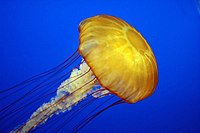
Photo from wikipedia
Atherogenesis is a complex physiological process involving inflammation and contributing to plaque development and vulnerability. The cyclic GMP-AMP synthase (cGAS)-stimulator of interferon genes (STING) pathway has emerged as a significant… Click to show full abstract
Atherogenesis is a complex physiological process involving inflammation and contributing to plaque development and vulnerability. The cyclic GMP-AMP synthase (cGAS)-stimulator of interferon genes (STING) pathway has emerged as a significant intracellular mechanism of innate immune defense programs. However, its involvement in atherogenesis has not been explored. In this brief report, we assessed the expression of STING protein in the artheriosclerotic (ATC) plaque of human patients. Our results showed that STING expression was detected in the ATC plaques. Most of the STING expression was noted in macrophages and lymphocytes. Of note, endothelial cells were constantly positive in all cases analyzed. STING expression was strong in the complicated ATC plaques near the cell debris and hemorrhagic foci. Considering these findings, we propose that cGAS-STING signaling plays a role in atherogenesis, opening novel avenues for therapeutic development.
Journal Title: Thrombosis and haemostasis
Year Published: 2022
Link to full text (if available)
Share on Social Media: Sign Up to like & get
recommendations!